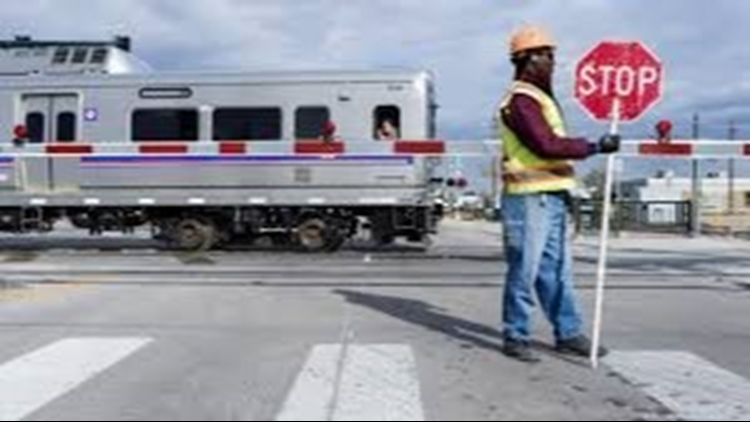The lover's quarrel between RTD and Denver Transit Partners continues. The Denver Transit Partners is the group that runs the A and G Lines for RTD.
Last month, the Transit Partners sued RTD for reimbursement essentially saying that state and federal regulators keep moving the goal posts on requirements, thus costing the Transit Partners money on crossing guards.
In its lawsuit, Denver Transit Partners said that RTD had withheld $6 million as a result of delays. RTD is expected to file an answer to the lawsuit on Thursday afternoon. Ahead of that, RTD sent a document to the Transit Partners, which released it to Next on Wednesday afternoon.
That document appears to say that RTD wants the Denver Transit Partners to fix whatever problems it thinks exists within 30 days or come up with a plan to fix the problems within 20 days, or RTD will start the process to fire the Transit Partners.
Here's the relevant part:
It is with great disappointment that RTD submits this notice of default in accordance with Section 41.2(a)(i) of the Concession Agreement. Pursuant to the terms of the Concession Agreement governing a continuing Concessionaire default, RTD respectfully requests that DTP either remedy the breaches within 30 days (per CA § 41.2(a)(i)(A) or within 20 days propose a remedial plan to cure the breaches (per CA § 41.2(a)(i)(B). Such a plan shall specify in reasonable detail the manner in which DTP proposes to remedy the breach and the latest date by which it is proposed that such breach or all such breaches shall be remedied. CA § 41.2(a)(i)(B). RTD acknowledges that the Concession Agreement provides that RTD may not exercise its right to terminate during the above-described cure period.
RTD, which would not confirm the existence of this filing until we said we already had it from the Denver Transit Partners, would also not confirm our interpretation of its very legal language.
"This is solely a commercial dispute," said RTD spokeswoman Laurie Huff. "This will not impact service on the University of Colorado A Line or B Line."
Flaggers are required at certain crossings on the A Line because RTD said it ran into an issue on the G Line and wanted to update the software on the A Line so it wouldn't have similar problems. The problem on the G Line was that a crossing gate at one stop came down five seconds too late during testing, an RTD spokesperson said in September.
Until regulators approve the new software, flaggers will be at three A Line crossings. And until all flaggers are gone, the horns will sound because quiet zones cannot be established without flaggers.
Find the full letter below. Can't see it? Try the link here.



